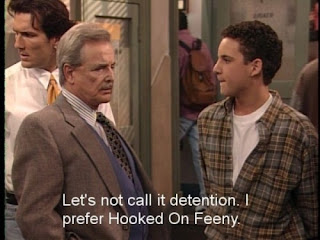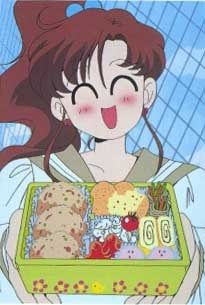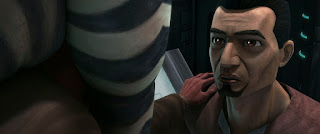(Guest post by Tyler Q)
I’m aware that choosing to write about a moment from a random episode of Avatar: The Last Airbender is not necessarily the most culturally “present” right now. But I can only write about what I know, and all that’s coming to mind are things that are personally relevant. So I hope you bear with me as I share my insights on the dangers of “suppression” to the point of “numbness.”
I’m aware that there are many clinical definitions of emotional numbness, such as with PTSD. However, for simplicity’s sake, I am focusing in on what I’ve come to identify as “emotional overload” or “suppression” – where we blatantly turn away from our own emotions. I’m talking about moments where we go through hell and more, the absolute worst, and deliberately choose to not check in with ourselves. I unfortunately am notorious for this.
I know that this is the complete opposite of what I should do. But part of me believes that if I do, I’ll realize just how bad the situation really is. I’ll end up slowing down – something I usually find I can’t do when there are so many people and things still requiring my attention. And so, I push on, saying I’ll have time later to work on myself. It’s only been recently that I’ve realized how dangerous this can be. Like running a marathon with a broken leg, you’re not just running slowly – you’re also damaging your chances of ever healing properly.
The first time I actually found a scene that portrayed my personal experience with suppression and numbness came from an episode of Avatar: The Last Airbender called “The Serpent’s Pass.” Katara seeks out Aang to find him distantly staring off at the horizon. In previous episodes, he had lashed out in anger after losing his beloved air bison Appa. Upon Katara’s approach, he mourns in remorse:
“You saw what I did out there. I was so angry about losing Appa that I couldn't control myself. I hated feeling like that.”
Katara responds with concern:
“But now you’re not letting yourself feel anything. I know sometimes it hurts more to hope and it hurts more to care. But you have to promise me that you won’t stop caring.”
Aang was so concerned in that moment that his lack of control over emotion would hurt him and the people that he loved. So he chose to distance himself from those emotions. However, Katara pleads with him to process his feelings. But he struggles to do this for the rest of the episode.
I do want to qualify that numbness isn’t always a choice. Sometimes, life really is just too much. However, I believe that all trials and tribulations, no matter their source or their severity, are opportunities for us to turn closer to Christ.
I have no certification in counseling or therapy, though have I been the benefactor of it many times throughout the years. Once again, not saying that certifies me in anything other than my own personal perspective. I’m just a medical student at the moment. But I have learned that there are many ways to feel physically “numb.” Sometimes, there are certain receptors in our body that don’t work. Other times, the problem rather is that those receptors work, but they are completely overwhelmed. I find this to be similar to emotions. Numbness isn’t the lack of emotion. It’s the overwhelming by it. It’s not that I just stop feeling. It’s that I feel so much that it completely washes over me. Whether this be when multiple trials collide in my life or I just forget to monitor myself, I am in danger of becoming “numb.”
A counselor taught me the danger of numbness is how it impacts your ability to feel and/or identify your emotions over time. You can’t just muscle through it. Distraction can only work when you’ve acknowledged all that you are feeling. If you suppress your feelings, they will haunt you or show up in the most inconvenient of times. Healing comes from a place of feeling and validation of those exact feelings. Therefore, whether we have consciously suppressed emotions or just happenstance find ourselves to be inundated with emotions, it is critical that we respond with turning inward and turning upward for help.
After extended periods of suppression, it takes me a while to recover my capabilities of feeling. Activities such as journaling and mindfulness meditation help me to better understand myself. But I find that those things can help only inasmuch as I am anchored in my relationship with Heavenly Father. He knows the importance of our emotions. In Moses 7, we read of a vision that Enoch had. Christ shows unto Enoch a scene wherein Satan has imprisoned the entire world with a “great chain.” It is at this moment that we read the surprising reaction of Christ in verse 28:
“He wept”
This is surprising because God is all-powerful and all-knowing. Despite this, He still is touched by emotion. Perhaps this is because emotion isn’t a weakness. It’s a divine attribute. When Enoch questions God on why He weeps when He is so powerful, God responds that He weeps BECAUSE of His love and concern over His children. He knows that things will work out in the end. But He still chooses to experience emotion, perhaps to remind Himself and us that those emotions are what encourage Him to love us so deeply, even as to send His Only Begotten Son to die for us.
This is the realization that Aang ultimately comes to as he finally shares with Katara:
“I thought I was trying to be strong. But really I was just running away from my feelings. Seeing this family together, so full of happiness and love, it's reminded me how I feel about Appa ... and how I feel about you.”
Acknowledging emotions helped Aang choose to do what is right and gave him the power and willpower necessary to overcome the challenges that he would continue to face. I believe the principle is the same with all of us.
Suppression keeps me from healing. Turning to Christ with my emotions on the other hand gives me opportunity to be honest with myself, to acknowledge hard truths about myself and my circumstances, and to find the path forward. Elder Neal A. Maxwell shared, “Our capacity to feel controls our behavior in many ways, and by inaction when our feelings prompt us to do good, we deaden that capacity to feel. It was Jesus’ striking sensitivity to the needs of those about him that made it possible for him to respond in action.”
I will not discount the difficulty that this takes for each person. Some may require more help than others, which is nothing to be ashamed of (once again, I am a benefactor here of therapy and counseling). But I still hold personal belief that the Lord did not send us to Earth to learn how to numb ourselves. He wants us to feel all things fully, if not for anything else than to feel just how much He loves us – especially for those struggling trials.
Love,
Tyler M. Q.



















































